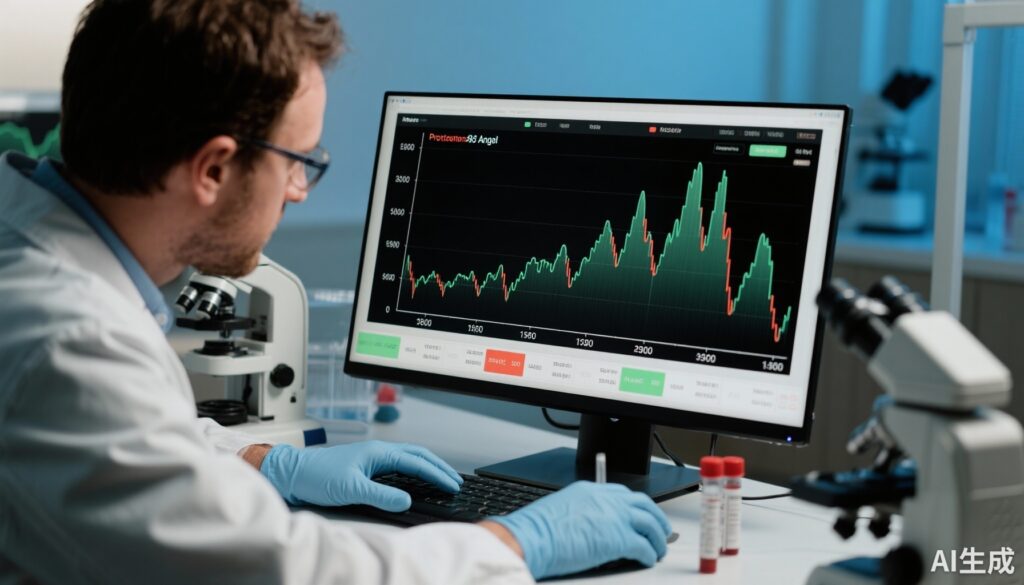Highlight
This retrospective PLCO trial analysis reveals that approximately 22% of elevated PSA measurements fall below biopsy thresholds on repeat testing the following year, highlighting significant annual intra-individual PSA variability. Over half of men with initial elevated PSA had subsequent lower PSA levels, supporting the utility of guideline-recommended confirmatory PSA testing before proceeding to biopsy. Importantly, a predictive scoring tool indicates that patients with persistently elevated PSA levels above biopsy thresholds have a low probability of reduction, suggesting these patients could safely bypass repeat PSA testing and proceed directly to further diagnostic evaluation.
Study Background and Disease Burden
Prostate cancer remains one of the most common malignancies among men worldwide, with early detection playing a critical role in reducing mortality. Prostate-specific antigen (PSA) testing is widely used as a screening tool, but its interpretation is challenged by inter- and intra-individual variability. Elevated PSA levels above certain biopsy thresholds (2.5, 3.0, or 4.0 ng/mL) often lead to further invasive workup such as biopsy. However, transient fluctuations in PSA can result in unnecessary procedures, causing patient anxiety and healthcare costs. Current guidelines universally recommend repeating PSA testing following an elevated result before pursuing biopsy, but it is unclear whether some patients with persistently high PSA levels could be exempt from this repetition, potentially streamlining care pathways.
Study Design
This study represents a retrospective multicenter cohort analysis of men aged 54 to 75 years enrolled in the screening arm of the randomized Prostate, Lung, Colorectal, and Ovarian (PLCO) Cancer Screening Trial. Participants received annual PSA testing over up to six years between 1995 and 2006 without being diagnosed with prostate cancer during this period. The primary outcome was the proportion of PSA tests above predefined biopsy thresholds (2.5, 3.0, and 4.0 ng/mL) that subsequently decreased below the same threshold at the next annual measurement. The analysis was performed at both the individual test and patient level, and data handling occurred from February 10, 2023, to May 23, 2025. Additionally, researchers developed a predictive scoring system incorporating prior and current PSA values to estimate probabilities of PSA falling below thresholds.
Key Findings
The cohort consisted of 11,176 eligible men with a median age of 60 years (IQR 57-65 years). Breakdown by threshold identified patients who had at least one elevated PSA measurement: 2,700 at 2.5 ng/mL, 1,928 at 3.0 ng/mL, and 952 at 4.0 ng/mL.
Analysis at the test level showed that 22% (95% CI: 21%-23%) of PSA measurements above 2.5 ng/mL decreased below this threshold at the subsequent annual test, with similar proportions for the 3.0 and 4.0 ng/mL cutoffs. At the patient level, 54% (95% CI: 53%-56%) of men with at least one elevated PSA had a follow-up measurement that fell below the threshold, indicating frequent intra-individual variability.
The study developed and validated a predictive scoring system which integrated current and prior PSA levels to stratify the likelihood of PSA normalization. Notably, patients with consecutive PSA measurements above threshold displayed a less than 10% chance of experiencing PSA reduction the following year. This implies that for such patients, repeating PSA tests may have limited clinical yield, and proceeding directly to biopsy or additional diagnostic modalities might be reasonable.
These findings underscore the heterogeneous behavior of PSA among men undergoing annual screening and reinforce the guideline-based recommendation to repeat PSA testing after initial elevations. They also provide nuanced evidence for personalized clinical decision-making, allowing exemption from repeat PSA testing in select patients demonstrating persistently elevated PSA profiles.
Expert Commentary
The study by Pickersgill et al. leverages robust PLCO trial data to address an ongoing clinical dilemma—balancing the risks and benefits of repeat PSA testing after an elevated result. The demonstration of considerable intra-individual variability aligns with prior smaller studies reporting fluctuating PSA levels attributable to biological and analytical sources. Importantly, this analysis distinguishes patients by PSA trajectory, offering a practical approach to identify men for whom repeat PSA testing might be safely omitted.
While promising, several caveats warrant consideration. The cohort excluded men with prostate cancer diagnosis during follow-up, potentially biasing the assessment of PSA variability to lower-risk populations. The data span testing practices from 1995 to 2006; changes in assay standardization and clinical thresholds since then may influence current applicability. Additionally, the study does not address complementary biomarkers or imaging modalities (e.g., MRI), which increasingly contribute to risk stratification before biopsy.
Current guidelines from the American Urological Association, National Comprehensive Cancer Network, and European Association of Urology consistently advocate repeat PSA testing before biopsy to minimize overtreatment and false positives. This study reinforces these recommendations but also suggests criteria for safely abbreviating the workup in those with persistently high PSA. Moving forward, integration of PSA kinetics, patient risk factors, and novel diagnostic tools will further refine individualized decision-making.
Conclusion
This retrospective analysis of annual PSA testing in a large screening cohort demonstrates substantial intra-individual PSA variability, with many elevated measurements returning below biopsy thresholds upon repeat testing. These findings support guideline recommendations for confirmatory PSA testing in most patients prior to biopsy. However, in patients with persistently elevated PSA above thresholds and absence of recent lower values, repeat PSA testing may be unnecessary, potentially expediting further diagnostic evaluation. These results offer actionable insights for optimizing prostate cancer screening strategies, reducing unnecessary invasive procedures, and tailoring patient care.
Future research should prospectively validate predictive tools and incorporate modern diagnostic adjuncts to enhance risk stratification. Such efforts will ultimately improve the specificity and efficiency of prostate cancer detection pathways, balancing early diagnosis with minimizing harms related to overdiagnosis and overtreatment.
References
- Pickersgill NA, Peré MM, Vertosick EA, et al. Prostate-Specific Antigen Levels Among Participants Receiving Annual Testing. JAMA Oncol. 2025 Sep 18:e253386. doi:10.1001/jamaoncol.2025.3386.
- Loeb S, Vellekoop A, Ahmed HU, et al. Systematic review of complications of prostate biopsy. Eur Urol. 2013 Sep;64(6):876-92. doi: 10.1016/j.eururo.2013.05.062.
- National Comprehensive Cancer Network. NCCN Clinical Practice Guidelines in Oncology: Prostate Cancer Early Detection. Version 2.2024.
- Fleshner N, Ahmed HU, Nam RK, et al. Role of imaging and biomarkers in prostate cancer diagnosis: A narrative review. Lancet Oncol. 2020 Jan;21(1):e63-e74. doi: 10.1016/S1470-2045(19)30659-2.


